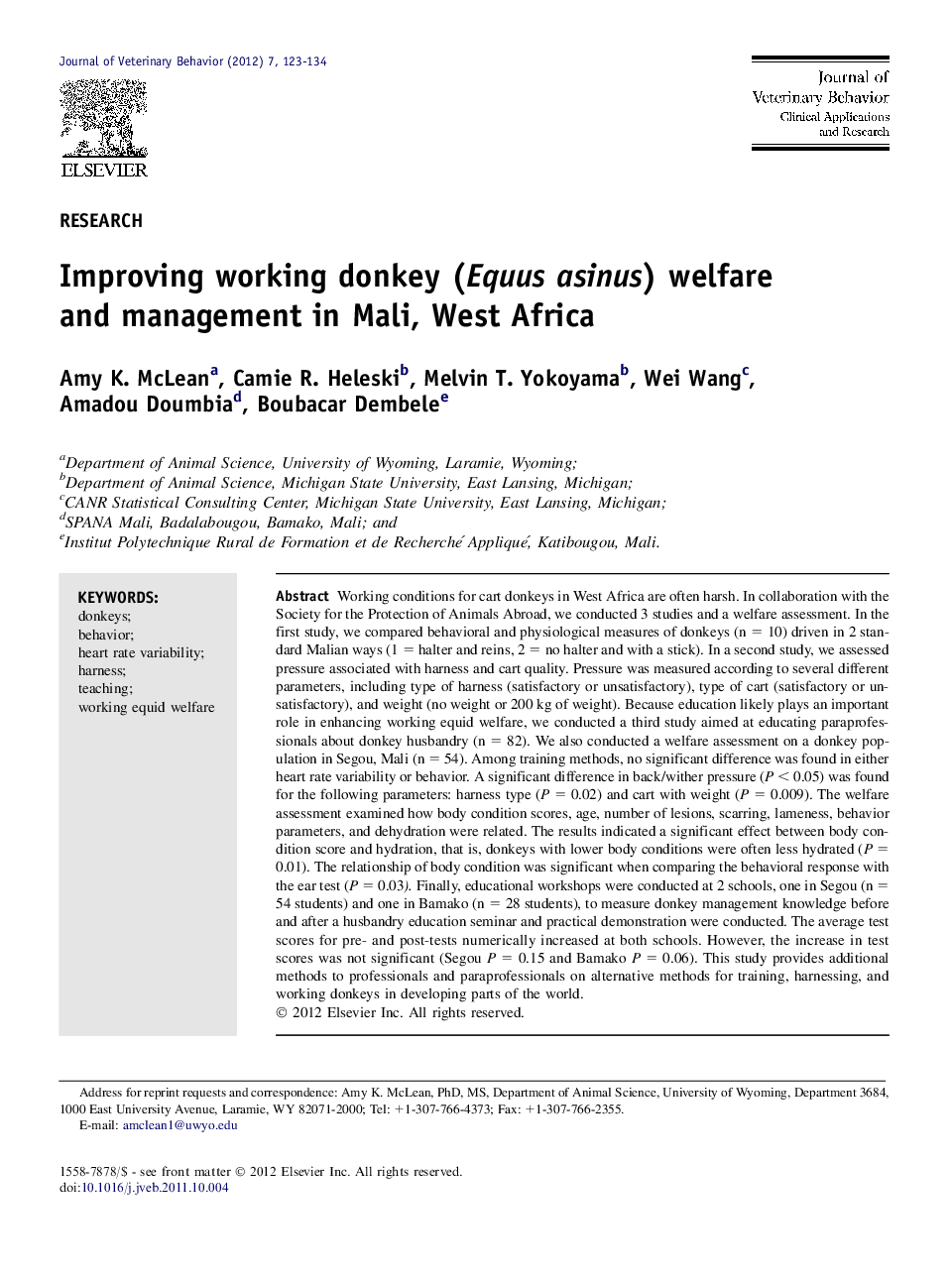| کد مقاله | کد نشریه | سال انتشار | مقاله انگلیسی | نسخه تمام متن |
|---|---|---|---|---|
| 2398995 | 1102027 | 2012 | 12 صفحه PDF | دانلود رایگان |

Working conditions for cart donkeys in West Africa are often harsh. In collaboration with the Society for the Protection of Animals Abroad, we conducted 3 studies and a welfare assessment. In the first study, we compared behavioral and physiological measures of donkeys (n = 10) driven in 2 standard Malian ways (1 = halter and reins, 2 = no halter and with a stick). In a second study, we assessed pressure associated with harness and cart quality. Pressure was measured according to several different parameters, including type of harness (satisfactory or unsatisfactory), type of cart (satisfactory or unsatisfactory), and weight (no weight or 200 kg of weight). Because education likely plays an important role in enhancing working equid welfare, we conducted a third study aimed at educating paraprofessionals about donkey husbandry (n = 82). We also conducted a welfare assessment on a donkey population in Segou, Mali (n = 54). Among training methods, no significant difference was found in either heart rate variability or behavior. A significant difference in back/wither pressure (P < 0.05) was found for the following parameters: harness type (P = 0.02) and cart with weight (P = 0.009). The welfare assessment examined how body condition scores, age, number of lesions, scarring, lameness, behavior parameters, and dehydration were related. The results indicated a significant effect between body condition score and hydration, that is, donkeys with lower body conditions were often less hydrated (P = 0.01). The relationship of body condition was significant when comparing the behavioral response with the ear test (P = 0.03). Finally, educational workshops were conducted at 2 schools, one in Segou (n = 54 students) and one in Bamako (n = 28 students), to measure donkey management knowledge before and after a husbandry education seminar and practical demonstration were conducted. The average test scores for pre- and post-tests numerically increased at both schools. However, the increase in test scores was not significant (Segou P = 0.15 and Bamako P = 0.06). This study provides additional methods to professionals and paraprofessionals on alternative methods for training, harnessing, and working donkeys in developing parts of the world.
Journal: Journal of Veterinary Behavior: Clinical Applications and Research - Volume 7, Issue 3, May–June 2012, Pages 123–134